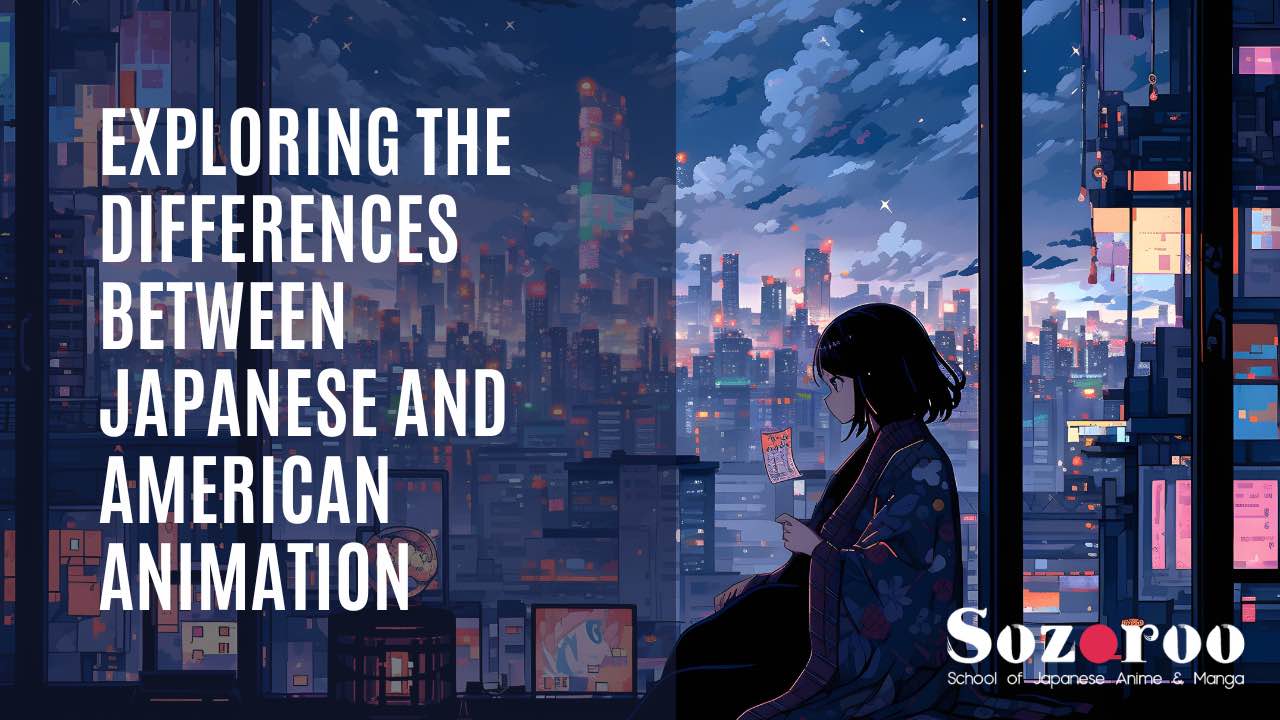The debate between Japanese anime and American animation has been ongoing for a long time. In this article, we will explore the differences between Japanese anime and American animation from the perspective of American anime fans. We will examine these distinctions in terms of style, expression, perspective, and content.
*Note: We will exclude 3DCG animation and stop-motion animation from this comparison.
Let's begin by focusing on character design. Japanese anime is characterized by its large eyes, intricate hairstyles, detailed clothing, and the use of shadows and highlights to create a realistic texture. On the other hand, American animation often features comical and exaggerated character designs, with less emphasis on shadows and a preference for simpler designs. Japanese anime characters tend to look more realistic, resembling actual humans.
Japanese anime is often associated with a more economical approach to animation. In certain scenes, characters may have limited movements, with only their mouths and a few strands of hair moving during extended dialogues. In action sequences, characters may strike poses without much movement, while the background is animated vigorously. In contrast, American animation tends to utilize more dynamic character movements and relies on symbols like "!!" or "?" to convey emotions. Some American animators view Japanese anime as "lazy" due to this contrast in animation style.
Even non-anime fans in the United States have noted this difference, commenting on the often-observed phenomenon of characters talking with their mouths moving rapidly, like in the case of the animated series "Astro Boy," which left a significant impression.
American animation typically employs straightforward camera angles and simpler perspectives. In contrast, Japanese anime often uses various angles and zoom techniques to enhance mood and intensify action sequences. It's worth noting that in the United States, there is a distinction in terminology, with Japanese animation referred to as "anime" and American animation as "cartoons."
As news of pixiv's strategic revisions spread, social media platforms buzzed with a tapestry of opinions. While some users suggested demarcating distinct sections for AI-generated and hand-drawn art, others voiced cautious optimism about pixiv's future trajectory. At the same time, resounding calls emerged for a complete prohibition on AI-generated art to shield traditional artists from potential encroachment.
Another notable difference lies in how characters' moral qualities are depicted. Japanese anime often portrays characters with both good and bad traits, resulting in complex character development. Conversely, American animation often delineates characters into clear-cut heroes and villains, with less emphasis on moral ambiguity.
Japanese anime and American animation each possess their unique appeal. Differences in character design, expression, perspective, and content contribute to the distinctiveness of both animation styles. This comparison offers insight into the world of animation and serves as a reminder that the industry continues to evolve, introducing new elements and changes that keep fans engaged and intrigued.



